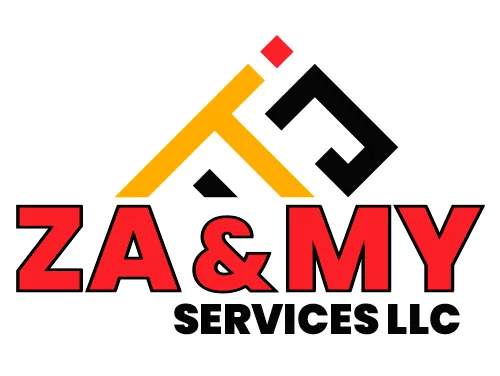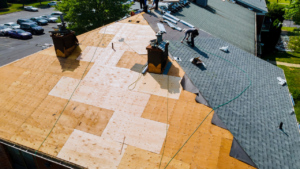Introduction
Your roof is one of the most critical components of your home, providing protection from the elements and ensuring your safety and comfort. However, it’s often overlooked until a problem arises. Regular roof inspections can help you maintain your roof’s health and prevent costly repairs. In this article, we’ll explore the 6 benefits of regular roof inspections and why they are essential for every homeowner.
Why Roof Inspections Matter
Many homeowners don’t think about their roofs until they notice a leak or other visible damage. By then, the problem might have escalated into something much more severe and costly. Regular roof inspections are a proactive measure that can save you from significant headaches and expenses down the road.
1. Early Problem Detection
One of the primary benefits of regular roof inspections is the early detection of potential issues. Inspectors can identify minor problems before they escalate into major ones, saving you significant time and money in the long run.
Key Points:
- Detect leaks and water damage early
- Identify damaged shingles or tiles
- Spot issues with flashing and sealants
How Early Detection Saves Money
When minor issues like small leaks or damaged shingles are detected early, they can be repaired at a fraction of the cost of major repairs. For example, fixing a small leak might cost a few hundred dollars, whereas repairing extensive water damage from an undetected leak could run into the thousands.
Case Study: Early Detection in Action
Consider a homeowner who had a small leak in their attic. During a routine inspection, the issue was spotted and repaired quickly. Without this inspection, the leak could have led to significant water damage, mold growth, and structural damage, costing thousands of dollars to fix.
2. Prolongs Roof Lifespan
Regular inspections can help extend the life of your roof. By addressing small issues promptly, you can avoid premature roof replacement, which is a considerable expense.
Key Points:
- Prevents minor issues from worsening
- Maintains the integrity of roofing materials
- Avoids costly emergency repairs
The Financial Benefits of Roof Longevity
A typical roof replacement can cost anywhere from $5,000 to $10,000 or more, depending on the size and materials. Regular maintenance and inspections can help you avoid this large expense by prolonging the lifespan of your current roof.
Practical Example: Extending Roof Life
Imagine a homeowner with a 20-year-old roof. Through regular inspections and maintenance, they can extend the life of their roof by an additional 5-10 years, significantly delaying the need for a costly replacement.
3. Maintains Energy Efficiency
A well-maintained roof contributes to your home’s energy efficiency. Inspections ensure that your roof insulation and ventilation are functioning correctly, which can lower your energy bills.
Key Points:
- Ensures proper insulation
- Improves ventilation
- Reduces energy consumption
The Impact on Energy Bills
A roof in poor condition can lead to significant energy loss. For instance, gaps or damage in the roofing material can allow heat to escape in the winter and enter in the summer, forcing your HVAC system to work harder and increasing your energy bills.
Real-World Example: Energy Savings
Consider a homeowner who noticed their energy bills were rising. After a roof inspection, they discovered insufficient insulation and ventilation issues. Addressing these problems not only improved their home’s comfort but also resulted in noticeable savings on their energy bills.
4. Protects Your Home’s Value
A well-kept roof enhances your home’s curb appeal and overall value. Regular inspections and maintenance can make your home more attractive to potential buyers if you decide to sell.
Key Points:
- Increases curb appeal
- Enhances market value
- Provides peace of mind to potential buyers
How Roof Condition Affects Home Value
The condition of your roof is one of the first things potential buyers notice. A well-maintained roof can significantly boost your home’s market value, while a roof in disrepair can be a major deterrent.
Case Study: Selling a Home with a Well-Maintained Roof
A homeowner planning to sell their home had regular roof inspections and maintenance. When it came time to sell, the roof’s excellent condition was a major selling point, helping them secure a higher price and a quicker sale.
5. Compliance with Warranty Requirements
Many roofing warranties require regular inspections and maintenance. By adhering to these requirements, you can ensure your warranty remains valid, providing you with financial protection.
Key Points:
- Keeps warranty valid
- Avoids disputes with warranty claims
- Provides financial security
Understanding Roofing Warranties
Roofing warranties often have clauses that mandate regular inspections and maintenance to keep the warranty valid. Failing to comply with these terms can result in the warranty being voided, leaving you unprotected.
Example: Warranty Compliance
A homeowner with a 10-year warranty had annual inspections as required. When they faced a major repair, the warranty covered the costs, saving them thousands of dollars. Without those regular inspections, the warranty would have been void.
6. Ensures Safety
A damaged roof can pose significant safety hazards, such as leaks leading to mold growth or structural weaknesses. Regular inspections help you address these safety concerns promptly.
Key Points:
- Prevents mold growth
- Identifies structural issues
- Ensures overall safety
The Health Risks of a Damaged Roof
Water leaks can lead to mold growth, which poses significant health risks, including respiratory issues and allergies. Structural damage can also compromise the safety of your home, posing risks to you and your family.
Real-Life Example: Ensuring Safety
Consider a family that discovered mold in their attic after a roof inspection revealed a leak. Addressing the issue promptly not only protected their home but also safeguarded their health.
Frequently Asked Questions
How often should I have my roof inspected?
It’s recommended to have your roof inspected at least once a year and after severe weather events.
What should I expect during a roof inspection?
A professional will check for damaged shingles, leaks, flashing issues, and other potential problems.
Can I inspect my roof myself?
While you can perform a basic visual inspection, it’s best to hire a professional for a thorough assessment.
What are the signs that my roof needs an inspection?
Look for missing shingles, water stains on ceilings, and higher energy bills, which may indicate roofing issues.
How much does a roof inspection cost?
The cost varies depending on the roof’s size and location, but it generally ranges from $100 to $300.
What should I do if my roof is damaged?
Contact a professional roofing contractor immediately to assess the damage and recommend repairs.
Are roof inspections covered by insurance?
Typically, routine inspections are not covered by insurance, but damage found during an inspection may be.
How can I find a reliable roof inspector?
Look for licensed and insured professionals with good reviews and a solid reputation in your area.
Conclusion
Regular roof inspections are a crucial part of home maintenance that can save you money, extend the lifespan of your roof, and ensure your home’s safety. By detecting problems early, maintaining energy efficiency, and complying with warranty requirements, you can protect your investment and enhance your home’s value. Don’t wait for a leak or damage to prompt action; schedule regular roof inspections to keep your home in top condition.
Maintaining a healthy roof is not just about avoiding repairs; it’s about ensuring the overall well-being of your home. By investing in regular roof inspections, you take proactive steps to safeguard your property, increase its value, and enjoy peace of mind knowing that your home is well-protected.






